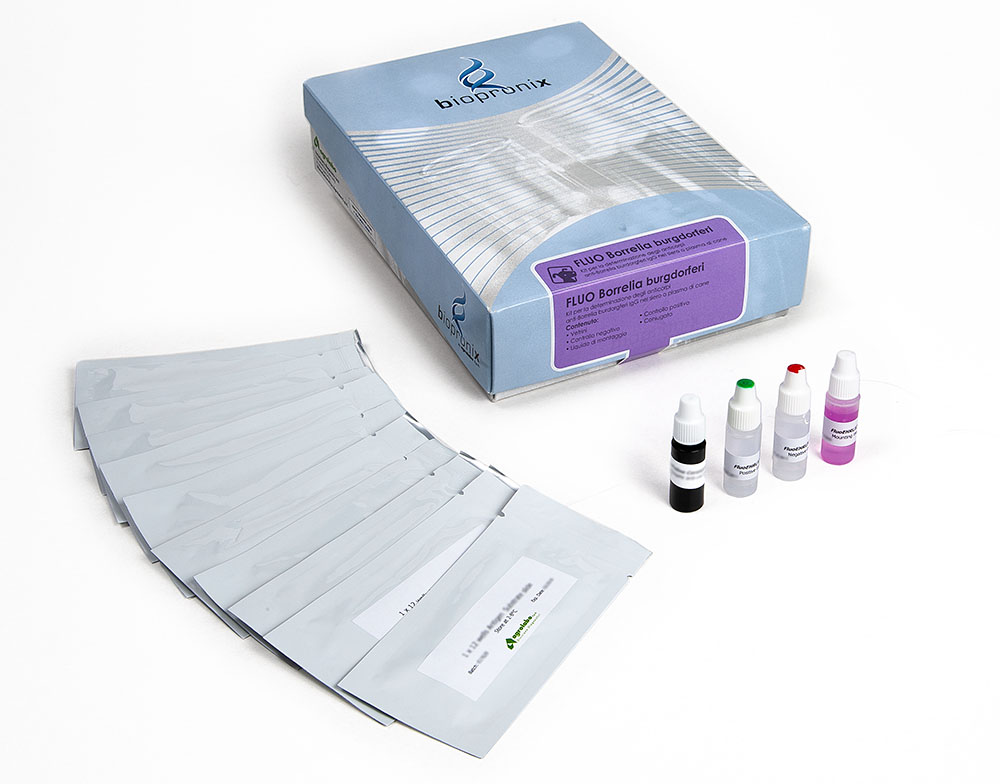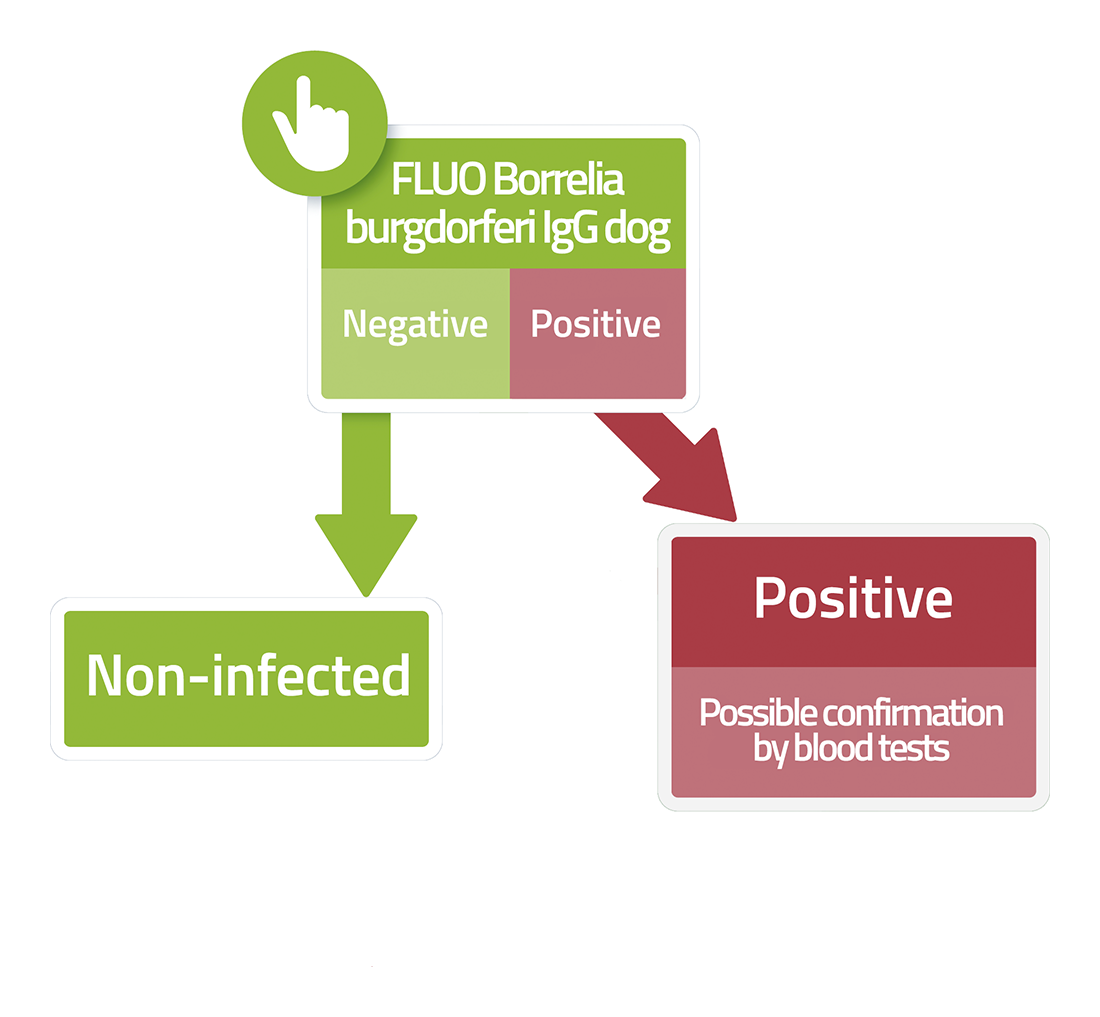FLUO BORRELIA burgdorferi DOG
IFA kit for the detection of IgG antibodies to Borrelia burgdorferi
Fluo BORRELIA burgdorferi DOG is a test based on the immunofluorescence technique for the detection of IgG antibodies to Borrelia burgdorferi in dog serum or plasma samples.
Lyme disease (also known as Borreliosis) is an infectious disease caused by a spirochete called Borrelia burgdoferi and transmitted by various ticks of the Ixodes group that act as vectors.
Borrelia cannot survive as free microorganisms in the environment. They are always associated with a host and are transmitted between vertebrate reservoir hosts and vector bloodsucking arthropods (hematophagous animals are defined as those animals that feed on blood or destroy the red blood cells of other animals).
The transmission of the spirochetes requires at least 50 hours of attachment of the tick, the time necessary for microorganisms to multiply and cross the intestinal epithelium, pouring into the hemolymph and then reaching the salivary glands and finally infecting the host through the tick’s saliva. After entering the body, a chronic infection is generated. Clinical disease in dogs occurs 2 to 6 months after exposure to ticks. The severity and propensity to develop symptoms are inversely proportional to the age and immune status of the animal. The onset of the disease is usually correlated with the onset of the increase in the antibody titer in the serum.
The disease is widespread in North America, Europe and Asia. In Europe it is quite common in Scandinavia and central Europe, in Italy it is found more frequently in the Karst, in Trentino-Alto Adige and in Liguria; it is however present, even if less commonly, also in other Italian regions.
- Fever 39.5-40.5 ° C,
- Intermittent lameness affecting the different limbs,
- Joint swelling,
- Lymphoadenomegaly,
- Anorexia and general malaise,
- Polyarthritis usually in the limb closest to the tick attack site,
- Nephropathies,
- Meningitis,
- Initial transient skin rash that develops where the tick has stung the animal.

